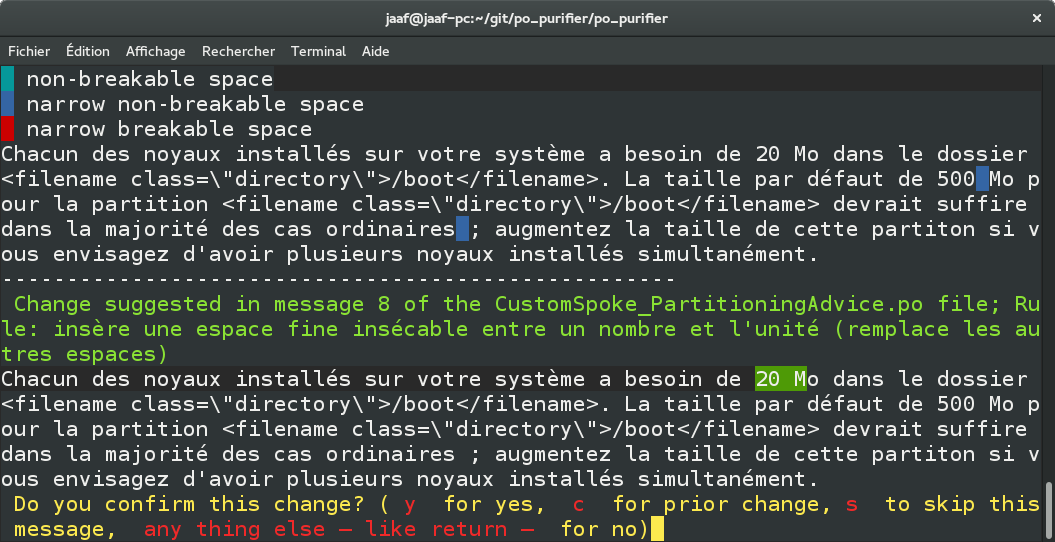From Fedora Project Wiki
< L10N
| Line 5: | Line 5: | ||
=Description of the tool= | =Description of the tool= | ||
This tool is a python script that can be found at [https://github.com/jaaf/po_purifier https://github.com/jaaf/po_purifier]. | This tool is a python script that can be found at [https://github.com/jaaf/po_purifier https://github.com/jaaf/po_purifier]. | ||
It scan a directory for .po files. For each file, it checks translated messages against typographic rules that | It scan a directory for .po files. For each file, it checks translated messages against typographic rules that reside in a configuration file nammed ''typorules.py''. | ||
Each time a typographic rule is not satisfied, the program stops and ask the user what to do. The figure 1 below shows how it looks like : | Each time a typographic rule is not satisfied, the program stops and ask the user what to do. The figure 1 below shows how it looks like : | ||
[[Image:po_purifier_1.png|center| | [[Image:po_purifier_1.png|center|frame|800px|''Figure 1: Typographic Fault Detected'']] | ||
* The message to the user, that appears in English here, normally appears in the user's language, provided that the program has been localized. It has 2 parts: | |||
** The first part that tells the user a typo rule is infringed and that it could decide for change or not | |||
** The typo rule itself (here in French) | |||
* In this case the French typo rule requires a no break space before a colon. | |||
Revision as of 06:14, 2 June 2016
Description of the tool
This tool is a python script that can be found at https://github.com/jaaf/po_purifier. It scan a directory for .po files. For each file, it checks translated messages against typographic rules that reside in a configuration file nammed typorules.py. Each time a typographic rule is not satisfied, the program stops and ask the user what to do. The figure 1 below shows how it looks like :

- The message to the user, that appears in English here, normally appears in the user's language, provided that the program has been localized. It has 2 parts:
- The first part that tells the user a typo rule is infringed and that it could decide for change or not
- The typo rule itself (here in French)
- In this case the French typo rule requires a no break space before a colon.
